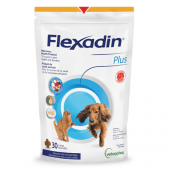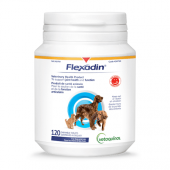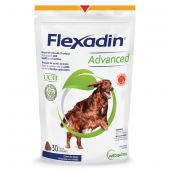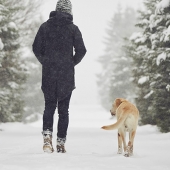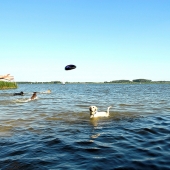Daily walks are a great way for your dog to spend some energy, stay fit and manage its weight. But as cold weather sets in and sidewalks become slippery, these pleasant walks may start looking more and more like a chore… Here are some tips to help you fully embrace the winter conditions and keep on walking your dog with love.
1. Dress for cold weather
While most dogs can handle the cold weather for a short time, a warm dog coat can still make the walks more enjoyable for them. It’s especially valuable for smaller breeds, puppies and older or short-haired dogs, who may find it more difficult to maintain their body temperature.
You should dress your dog in appropriate gear, but also make sure you’re comfortable as well! Put on an extra layer underneath your normal clothes, like a t-shirt or leggings, in addition to wearing a heavy-duty winter coat and a toque that covers your ears. For gloves, you may consider a thin leather pair that provides better control when holding the leash or making fine movements—like picking up after your pooch. During extreme conditions, attach ice cleats to your boots for improved stability.
2. Pick the right dog leash
A dog pulling on their leash or chasing after things can make it difficult to walk on icy surfaces. Attach the dog leash to a front clip harness for improved control and to lessen the dog’s pulling. Use a sturdy, solid leash, rather than a retractable model, to keep a better grip. You may also consider a hands free leash that ties around your waist, which will remain attached should you slip and fall.
3. Make the most of shorter walks
On the harshest days of winter, even seasoned cold weather dogs may not be able to stay outside as long as they usually do. When your walk only lasts 10 or 20 minutes, make the most of the short time you have! High intensity games, such as playing fetch or trying to catch snowballs in mid-air, will allow your pet to spend more energy. Remember to keep an eye out for hypothermia symptoms: if your dog is shivering, whining or seems to have a hard time breathing, bring them inside immediately.
4. Walk in the day
Whenever possible, try to walk your dog during daylight hours. It will usually be the warmest part of the day, making the moment more enjoyable. You’ll also be more visible to vehicles and have an easier time spotting icy patches and other treacherous obstacles in sunlight.
5. Plan your winter walk differently
As soon as your dog seems uncomfortable because of the cold weather, you need to get inside quickly. Plan your route accordingly! Instead of walking half an hour in a straight line before heading back, consider going up and down nearby streets or walking in an expanding circle pattern. This way, if needed, you can return home faster using a direct path.

